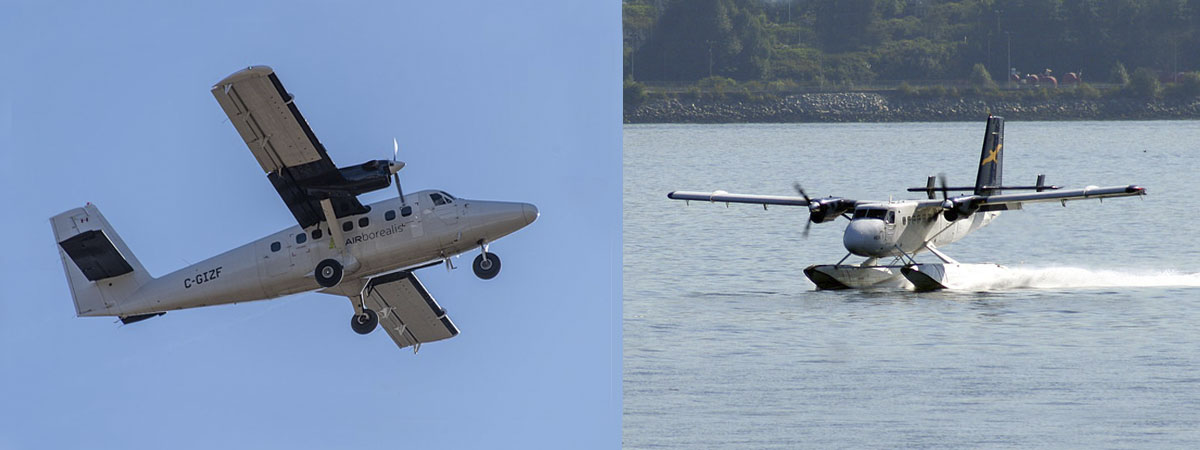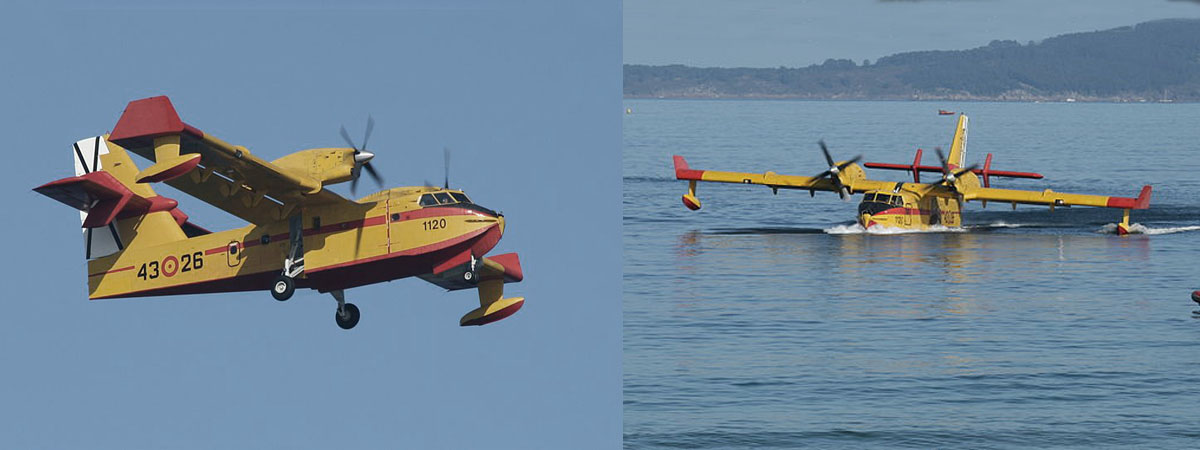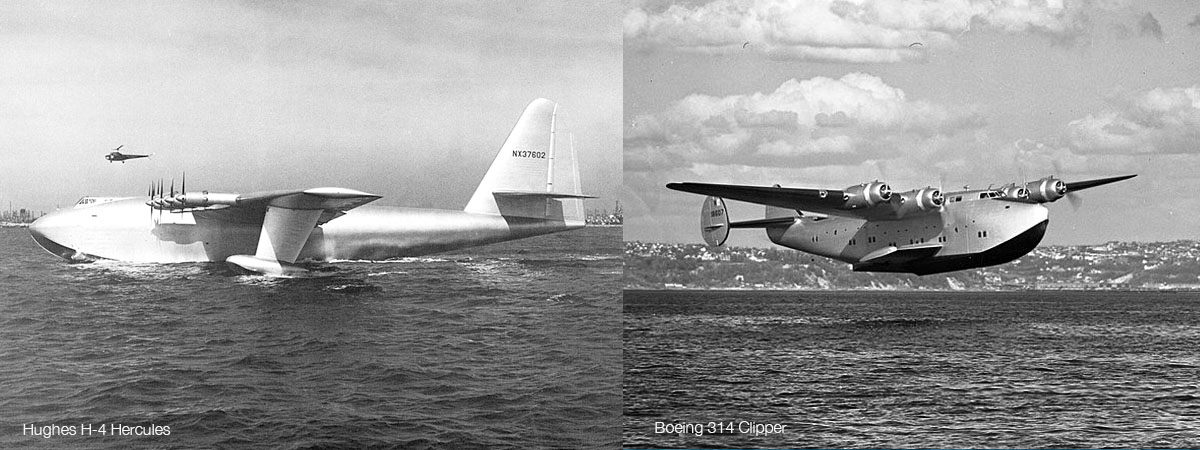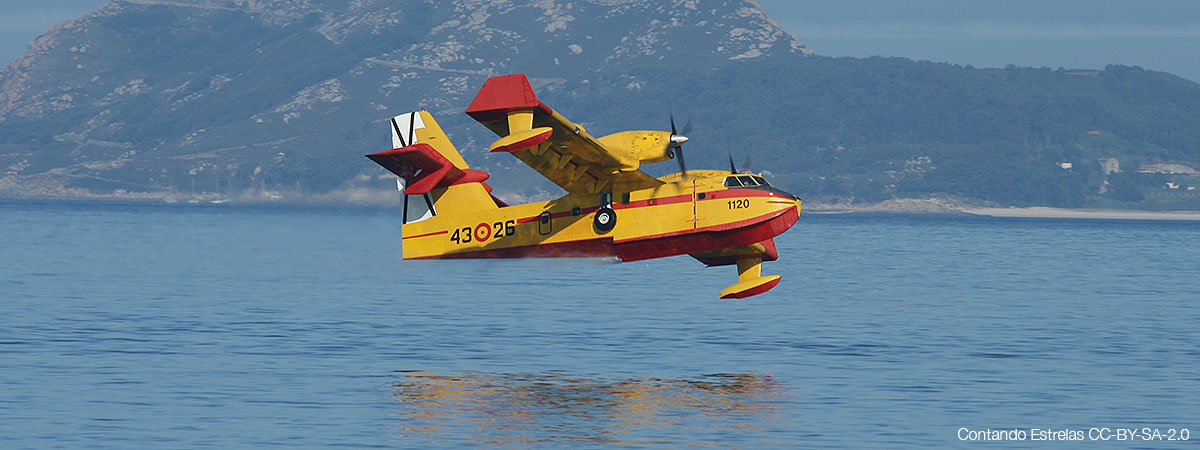Seaplanes are a special type of aircraft that can land and take off on water surfaces. They originated at the dawn of aviation, and until the middle of the 20th century they were highly regarded due to the very small amount of infrastructure they require for operation.
Seaplanes can operate in the water with hardly any need for airport infrastructure, which is a clear advantage for their development in a world increasingly concerned with respecting the environment.
Intellectually they are also particularly interesting, as they sit at the crossroads between naval engineering and aeronautics. Today, they are an expanding segment of commercial air traffic with a promising future.
They are usually classified into two different types:
The first type consists of conventional aircraft where the landing gear has been replaced by floats, and where the fuselage does not touch the water. These are sometimes referred to as “floatplanes”. An example of this type is the DHC-6 Twin Otter, considered by many to be the best-selling aircraft in Canadian history. This aircraft is even capable of landing on beach sand, which it does when operating at Barra Eoligarry Airport in Scotland (IATA: BRR; ICAO: EGPR).

The second type of seaplane consists of aircraft where the fuselage is shaped like a ship’s hull, which ensures the necessary buoyancy during the docking manoeuvre, and when moving over water during take-off or landing. This special type of aircraft usually has a high wing configuration, with the engines located on top (to move them as far away from the water as possible). They are sometimes called “flying boats.” Examples include the Canadair CL-215 seaplanes belonging to the Spanish Air Force, which are particularly effective for firefighting and other activities such as combating drug trafficking and controlling illegal immigration.

Seaplanes aren’t necessarily small aircraft. The world’s largest amphibious seaplane, the Chinese model AG600 Kunlong, is 36.9 metres long, and has a 38.8-metre wingspan (classified as code letter D by the ICAO). With a maximum take-off weight of 53.5 tonnes and a maximum range of 4,500 kilometres, it can carry up to 50 passengers and 12,000 litres of water (in the version adapted for firefighting). To watch the promotional video of its first test flight, please click here.
It is also worth mentioning the model Beriev Be-200 (in Russian: Бериев Бе-200), alias “Altair”: the world’s only jet seaplane, with a wingspan of 32.7 metres. In the photo below you can see it taking off. You can watch it in action in this video.

Finally, this second type of seaplane also includes the Hughes H-4 Hercules model, considered by many to be the greatest eccentricity of its creator, the millionaire Howard Hughes. It was 66.65 metres long and had a wingspan of 97.54 metres, the largest in the world at the time (1947). Although it was built mostly of wood, it did manage to take off and land, although it only did so once.

It is common for both types of seaplanes described above (floatplanes and flying boats) to be capable of operating in conventional aerodromes. In this case, they are often referred to as “amphibious aircraft.” Curiously, when designing a new model of seaplane, the “anchor” should never be forgotten.
Some of the world’s leading seaplane manufacturers are: Aztec Nomad and Viking Air (both in Canada), Dornier (Germany), ShinMaywa (Japan) and Beriev (Russia). Companies in the US include: Aviat, Bombardier, Cessna and Seawind.
Interestingly, neither Airbus nor Boeing are among them, although the latter historically manufactured the Boeing 314 “Clipper” model until 1941. At the time it was the largest mass-produced commercial transport aircraft in the world, designed for transoceanic flights. It could accommodate 74 passengers in seven luxurious compartments. It also had a dining room with capacity for 14 people and a nuptial suite in the back, near the tail of the plane.
Mass passenger transport by seaplane lost popularity in the 1950s because seaplanes were less efficient than conventional aeroplanes, which were more aerodynamic, and could also transport large numbers of passengers directly to airports on the ground.
However, the future may be different and more promising – possibly even spectacular. There are currently problems arising from many “land” airports due to the impact of their presence on the surrounding area. In particular, increasingly restrictive noise legislation imposes enormous constraints, often exacerbated by the scarcity of space available for the development of airports that are “trapped” by the urban development of the city they serve.
Some conceptual developments of transoceanic seaplanes have already been carried out in response to these issues. They are based on the “flying wing” concept, which is more aerodynamically efficient than the usual “wing-fuselage” configuration.
The first conceptual designs estimate that this type of aircraft will have a length of 80 metres, a maximum height of 20 metres and a wingspan of 160 metres (twice the maximum value set by ICAO for code F aircraft, which are the largest). An Airbus A380, currently the largest commercial transport aircraft in the world, has a wingspan of 79.75 metres (half the value) and a length of 72.73 metres. These new seaplanes could carry up to 2,000 passengers, whereas an Airbus A380 transports a maximum of 853 passengers in its highest density configuration.

Clearly, there is no land infrastructure adapted for the operation of aircraft of these dimensions. In addition, ICAO would have to develop specific regulations for them beforehand. However, this problem does not exist at sea, due to the sheer extent of free space available.
What’s more, this type of aircraft would carry their engines above their wings, which is advantageous in terms of noise emission. However, when taking off or landing on stretches of water a long way from the coast, noise pollution is not likely to be a constraint for the normal performance of operations.
Its large size improves aerodynamic efficiency while also facilitating operations in heavy swell conditions. If necessary, floating breakwaters can be used, which is technically feasible, even on the high seas.
Seaplanes are the most environmentally friendly “motorised flying machines”, as they do not require any infrastructure other than natural surfaces of water for their operation. What’s more, seaplanes do not require the exclusive use of these water surfaces, as they can often be effectively shared with other users. Nor should we forget that 70% of our planet’s surface is water.
Who knows, maybe one day we will be able to see transoceanic seaplanes taking off from Malaga, Barcelona, New York, Lisbon, Buenos Aires, Hong Kong, etc. The answer lies in the future.



